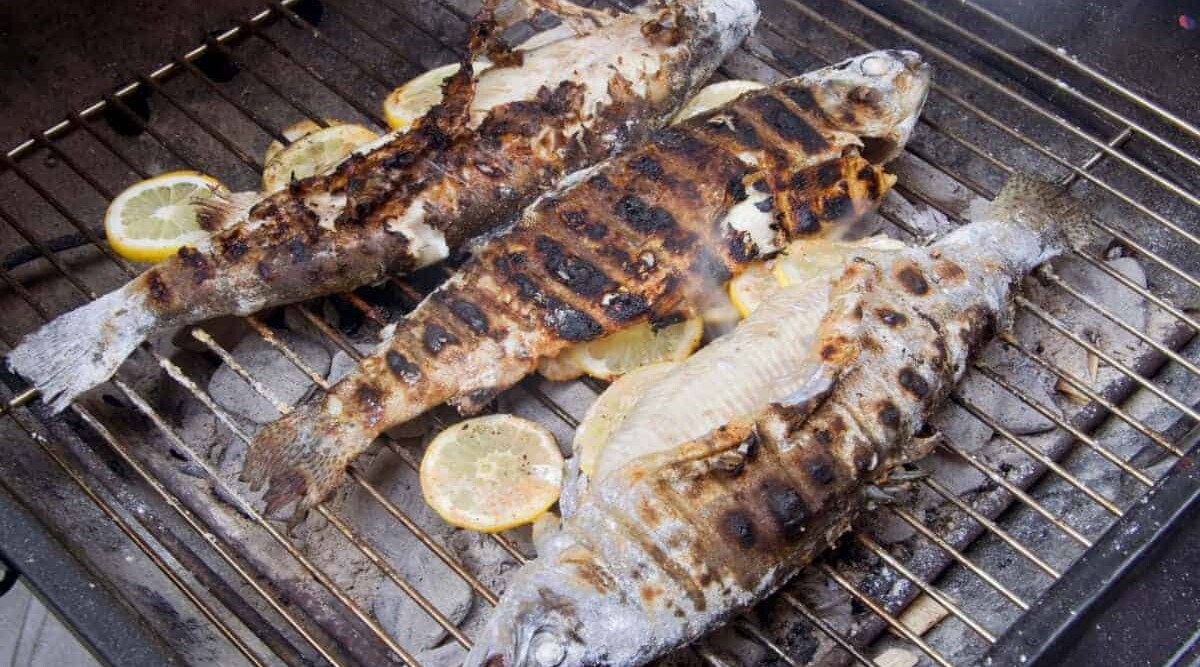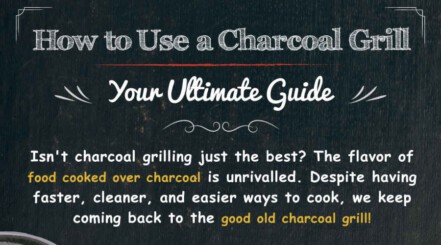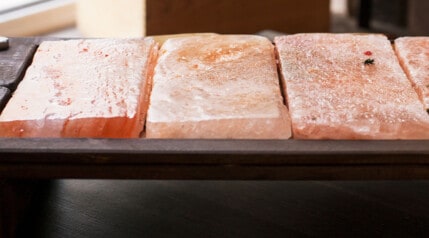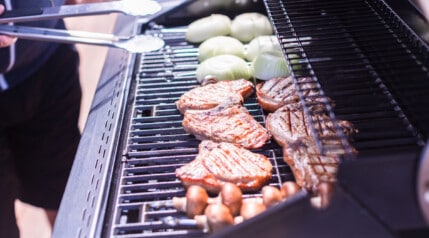
In this article, you’ll get proven tips on how to prevent your meat, fish or poultry from sticking to the grill, so it never happens to you again!
Suppose you’re out on a fishing trip to Idaho.
You catch the most beautiful, 20-inch rainbow trout you’ve ever seen. You clean and have it on the grill within 20 minutes from landed. It is that fresh. Then it completely sticks to the grill and looks like a bear has mangled it!
It can be devastating to go to all the trouble of preparing a gorgeous piece of fish or chicken only to have it stick to the grill, break into pieces and ruin your presentation.
Why does food stick to the grill, and how can you prevent yourself destroying another beautifully prepared meal?
Let’s get into it.
Jump to:
Why Do Foods Stick to The Grill Grates?
The three biggest reasons that food sticks to the grill grates are:
- It’s not hot enough
- The grates are dirty
- There is no oil on the grates or the meat
Scientifically speaking, when the food sticks it’s because the proteins in the meat create a chemical bond with the metal grates.
A chemical bond is where molecules share electrons creating an attraction like a magnet. It’s the same principle when tape sticks to your skin.
Meat will usually stick in the beginning until it has developed a good sear and grill marks. Another reason for sticking is seasonings and sauces that contain sugar. Sugar burns and turns to carbon which adheres to the grate.
Here are some suggestions to reduce or eliminate those “bonds” or sticking when you grill.
Tips to Prevent Food from Sticking to the Grill
If you could look at a grill grate under a microscope, you would see pores and a rough, pitted surface.
Even grates coated with nickel or porcelain aren’t as smooth as they appear to the naked eye.
And the fact is, the rougher the metal, the more chances any food cooked there will stick. So what can you do? And what should you be thinking about to prevent food sticking?
How Clean is Your Grill?
The best thing you can do to keep food from sticking is to start with clean grates.
If you have burnt on carbon from last night’s barbecue sauce, it will act as a food magnet, and the food will stick to it. Always clean your grates with a scrub pad, some scrunched up foil or a good grill brush, then rinse with clean water before you start.
It’s best to do this while the grill is still warm, or had time to warm up once it’s lit again from cool. It helps free the grease and oils.
For more detailed information on cleaning particular grill grates, check out how to clean cast iron grates, and how to clean stainless steel grill grates.
Use Oil with a High Smoking Point
Most cooking sites recommend oiling the grates before grilling to prevent sticking. That’s true in many cases. However, you need an oil with a high smoking point. The higher it is, the longer it will last on the grill.
You can see a chart of oils and smoking points here. Peanut, sunflower, corn and palm oils have smoking points around 450 °F or 232 °C. Refined canola oil is a good alternative with a smoking point of 400 °F or 204 °C.
Once your oil exceeds the smoking point, it starts turning into carbon. Adding more oil on top will just create more of the same.
One method of seasoning the grill is the same technique used to season cast iron skillets. Just wipe the grates with oil, heat to temperature, remove the grates and let them cool. Re-oil them and put them back on the grill. This technique should reduce any sticking.
If you’re oiling hot grates, just ball up two sheets of paper towel, dip them in the oil and use some long tongs to rub the oil-soaked paper on the grates. Here’s a video showing the technique.
Instead of Oiling the Grill, Oil The Meat.
You can use the method above in conjunction with this technique or skip oiling the grill altogether.
First, dry the meat with a paper towel and lightly oil it. As you lay the meat on the grill, the oil will fill the pits and rough areas of the metal, effectively making it smoother and reducing the chance of foods sticking.
What About Cooking Spray?
If you use cooking spray, use it before you start the fire.
Most cooking sprays use canola oil, a high-temperature vegetable oil. However, they use highly flammable butane, isobutane and propane compressed gases as the propellant. They will make an impressive blow torch should you try and spray while there are flames. It’s dangerous, so don’t do it.
Cooking sprays can help your grates release food better.
In the following video, one cook compares Weber grill spray, olive oil and a product called ‘grill wipes’ side by side. In the end, they work about the same, so save your money and just use a quality cooking oil.
Pre-Heating Lets the Meat Steam Itself Free
Always preheat your grill. You want to hear a sizzle as you lay on the meat.
Wherever the meat contacts the metal, it creates steam. This helps keep the proteins from bonding to the metal’s surface.
If you’ve ever put a chicken breast on cold grates or in a cold frying pan and then heated it, then you know how bad it sticks.
The steam helps release the meat from the grates. Once the moisture has evaporated, the meat will begin to brown and give you those beautiful crusty grill marks.
Pre-Cooking Reduces Bonding
Ever notice when you flip a burger or chicken breast the second side rarely sticks? That’s because the temperature has risen enough to start cooking the proteins and reduces their ability to bond to the metal grate.
If you have thin wire grates that tend to stick to soft foods like burgers and fish, you can lightly sauté in a pan or broil them before placing them on the grill.
While beef, pork, and lamb are more forgiving, chicken and fish can stick and break as you try to turn them. By precooking, you’ll firm the meat and prevent it from sticking.
In our opinion, this is too much work and kind of defeats the purpose of grilling. We’d never do this, but it wouldn’t be a complete article without at least giving this technique a mention.
Let’s look at ways we can avoid grilling disasters with the two ‘stickiest’ protein items: Chicken and fish.
Keep Chicken from Sticking To the Grill
Whether you cook chicken skin on or skin off, you can use the same method.
Start by patting the chicken dry, season and then oil lightly with olive or canola oil.
Put the chicken on the grill, skin side down. This goes for boneless, skinless chicken breast too, even though the skin is removed. Place the chicken with the side where the skin was removed facing down. The skin side is smoother with less meat to grab onto the grates.
If it still sticks when you turn it, try leaving it covered for an extra minute before attempting again.
Keep Fish from Sticking To the Grill
Fish is the most delicate protein you can grill. The muscle contains 70% to 80% water depending upon species, compared to only 69% or less with skin-on white meat chicken. The extra water content can make the fish stick if you don’t have a hot grill, and you don’t add a little oil.
When grilling fish, the skin is your friend. Oil the grates as we described earlier. Another tip is to leave the fish out of the refrigerator for about 15 minutes to bring it up to room temperature. A cold fish on a hot grill can cool the grates quickly causing them to stick.
Brush or rub both sides of the filet with oil and place the fish skin side down. After two to four minutes, try lifting the filet with a thin spatula. If it releases, just flip it. If it still sticks. Wait for another 30-seconds and try again. The skin will usually release when it’s ready to turn.
The skin is delicious and holds most of the Omega fatty acids. That said, not everyone likes it. Use the skin as a non-stick shield for the filet. Gently slide the spatula between the meat and the skin. The skin will remain on the grates, and you can cook the other side of the fish directly on the grates or back on the skin to protect it.
The meat side of the fish will partially cook, and it won’t stick like the first side. Cover the grill, then cook until the center of the filet is opaque. That will be 125 °F (52 °C) internal, as measured on an instant-read digital meat thermometer, the perfect temperature for salmon.
If you’re cooking a firm white fish like snapper, grouper or halibut, leave it on a little longer until it reaches 140 °F (60 °C)
Rub the grates with raw potato?
One home chef out there made the following video of rubbing the grates with half a raw potato before grilling fish. The starch prevents the proteins in the fish from bonding with the metal. This proven method works successfully. The bonus is that you can compost the potato, unlike the empty can of cooking spray.
What Are Your Thoughts?
The big tips here are to keep your grates very clean, season them with a high-temperature oil, oil the meat and grill at higher temperatures.
Don’t forget to have a little patience and let the grill do its job. Turning food too early won’t give the meat enough time to release from the metal.
Let me know if you find these tips helpful. If you have any suggestions I missed, please drop them in the comments below to help your fellow pitmasters.
Happy grilling!






0 Comments